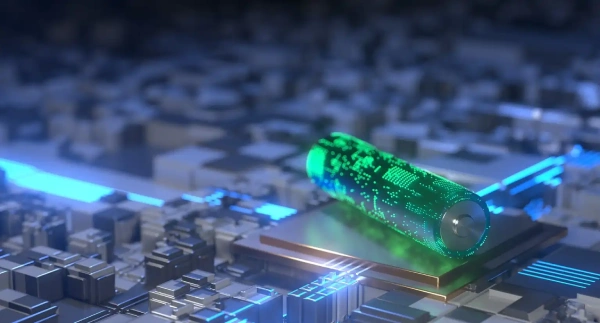Lithium batteries’ fast charging technology and battery management system (BMS) are currently important research directions in electric vehicles and portable devices. Fast charging technology can significantly shorten battery charging time and improve user convenience. The battery management system can ensure the safety and life of battery charging. We briefly introduce the research status and challenges of lithium battery fast charging technology and battery management systems.

Part 1. Lithium battery fast charging technology
1. Fast charging principle and design
1) Fast charging principle: The fast charging technology of lithium batteries is mainly achieved by optimizing battery materials, improving battery structure, and controlling the charging process. For example, the battery’s charging speed and capacity utilization can be improved by using high-capacity electrode materials, changing the electrode structure, adjusting the electrolyte composition, etc.
2) Fast charging source design: In order to meet high-power charging requirements, it is necessary to design an efficient and stable charging power supply. For example, using high-power chargers and adopting a collaborative software and hardware design can improve charging efficiency and power supply stability.
3) Thermal management and heat dissipation design: A large amount of heat is generated during fast charging, and effective thermal management and heat dissipation design is required to prevent battery overheating and damage. The temperature during charging can be effectively controlled using technologies such as heat dissipation devices, heat pipes, and liquid cooling.
2. Types of fast charging
1) High-power charging: Increase the charging speed by increasing the charging current. However, the safety and life of the battery need to be considered.
2) Fast charging algorithm: Improve charging efficiency and speed by optimizing the current and voltage control strategies during the charging process.
3) Fast charging materials: Develop positive and negative electrode materials with high ion conductivity and fast lithium ion intercalation/deintercalation capabilities to increase charging speed.
Part 2. Lithium battery management system (BMS)
Battery Management System, or BMS for short, is a key system responsible for monitoring, controlling, and protecting lithium batteries. It mainly includes the following functions.
1. Battery status monitoring
The battery management system needs to monitor the status of the lithium battery, including voltage, current, temperature, and other parameters. Using sensors and monitoring circuits, battery status information can be obtained in real-time.
2. Charging process control
The battery management system needs to control the lithium battery charging process to optimize the charging rate, charging time, etc. The use of intelligent charging algorithms and control strategies can ensure the safety and efficiency of the charging process.
3. Battery balancing technology
During the charging process of lithium batteries, imbalances will occur between battery cells, resulting in reduced charging efficiency and battery life. Using battery balancing technology, such as dynamic balancing, static balancing, etc., can improve the performance and life of the battery pack.
4. Fault diagnosis and protection
The battery management system needs to perform fault diagnosis and protection to avoid battery performance damage or safety accidents caused by battery overcharging, over-discharging, over-current, etc. Using fault detection and protection measures can improve battery reliability and safety.
Part 3. 4 ways to quickly charge lithium-ion batteries
The four common fast charging methods for lithium-ion batteries are as follows.
1. Pulse charging
The pulse process is arranged after the charging reaches the upper limit voltage of 4.2V. And continue above 4.2V.
Pulse charging consists of three stages: pre-charging, constant current charging, and pulse charging. In the constant current charging process, the battery is charged with a constant current, and part of the energy is transferred to the interior of the lithium battery.
2. Reflex fast charging method
Reflex fast charging is also called the reflection charging method or the “burp” charging method. This method’s working cycle includes forward charging, reverse instantaneous discharge, and stop charging. It solves the battery polarization phenomenon to a large extent and promotes charging efficiency. However, reverse discharge will shorten the life of lithium batteries.
A current of 2C and a TC of 10s charging time are first used in each charging cycle. Then the charging stop time is Tr1 of 0.5s. The reverse discharge time is Td of 1s. Tr2 with a charging stop time of 0.5s. Each charging cycle time is 12s. As charging proceeds, the charging current will gradually become smaller.
3. Smart charging method
Smart charging is the most advanced charging method at this stage. For example, the core principle is to apply du/dt and di/dt control technology. Determine the battery charge status by checking the increment of battery voltage and current. Track the battery’s acceptable charging current in real time so that the charging current is always near the battery’s acceptable maximum charging curve.
4. Intermittent charging method
Lithium battery intermittent charging methods include variable current and variable voltage intermittent charging methods.
The function of the variable current intermittent charging method is to change constant current charging into voltage-limited variable current intermittent charging. Variable voltage intermittent charging is based on the variable current intermittent charging method, and some people have studied the variable voltage intermittent charging method. The difference between the two mainly lies in the first stage of the charging process.
Part 5. What are the challenges in fast charging of lithium batteries?
1. Temperature rise control
Lithium batteries tend to generate a lot of heat during fast charging. The battery’s temperature needs to be effectively controlled and managed to prevent overheating from damaging the battery.
2. Charging equipment requirements
Fast charging of lithium batteries requires higher power and more advanced charging equipment. The construction and investment of related infrastructure are also challenges.
3. Security
There are certain safety hazards in the fast charging of lithium batteries, such as battery overheating and overcharging. A strict battery management system is required to ensure the safety of the lithium battery charging process.
4. Lithium battery life
The fast charging process has a greater impact on the life of lithium batteries. The balance between battery performance and life needs to be considered comprehensively in designing fast charging technology and battery management systems.
Part 6. R&D direction of lithium battery fast charging
1. Research and development of new materials
Research and develop high capacity, high conductivity, and good cycle stability electrode materials. to meet the need for fast charging.
2. Charging equipment technology
Develop efficient, high-power chargers and power systems to improve charging efficiency and stability.
3. Intelligent battery management
Develop an intelligent battery management system based on artificial intelligence and big data technology. This enables more precise charging control and fault prediction, improving battery performance and life.
4. Unified fast charging standards
Develop unified fast charging standards and protocols. This can promote the interoperability of charging equipment and batteries and promote the development of the industry and the application of technology.
Related Tags:
More Articles

Overview of Deep Cycle Lithium Battery
In this article, we explore the life, voltage, capacity, and charging considerations of deep cycle lithium batteries.
How Long do Lithium Batteries Last?
How long do lithium batteries last? we will explore the factors that influence the lifespan of lithium batteries and provide insights into their longevity.
How to Choose the Best LiFePO4 Battery?
Choose LiFePO4 batteries for superior performance, safety, and versatility in EVs, UPS, and backup power. This guide helps you make informed decisions.
Get 12v Lithium Car Battery As a Power Source for the Ride
Make the right choice for your vehicle's battery needs by installing a 12 volt lithium car battery. You will enjoy maintenance-free longevity with this change.
Everything About A Small Lithium Ion Battery
Discover the features, uses & future potential of a small lithium ion battery. A compact and tiny powerhouse ideal for smartphones, wearables, drones & more.





